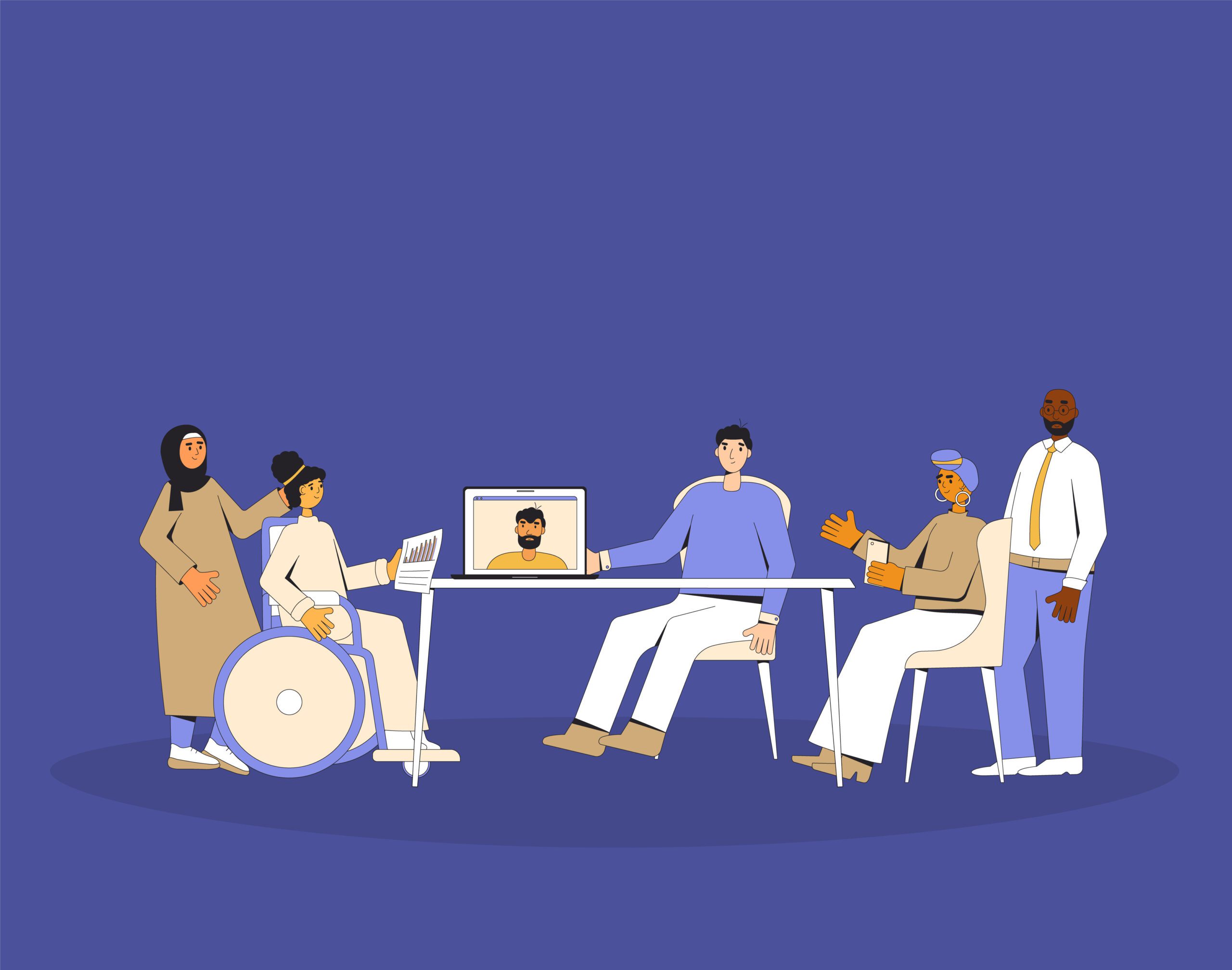There’s no question hiring a diverse workforce is critical. But when it comes to diversity, equity and inclusion, DEI, you must look at the whole picture. That’s because each of these three words has meaning and importance. You can’t achieve success without shaping a plan that takes them all into account.
Diverse organizations are stronger
Let’s start with what has now become increasingly obvious. Diverse workforces make organizations more collaborative, productive and innovative. According to McKinsey’s Diversity Wins report, “There is ample evidence that diverse and inclusive companies are likely to make better, bolder decisions—a critical capability…For example, diverse teams have been shown to be more likely to radically innovate and anticipate shifts in consumer needs and consumption patterns—helping their companies to gain a competitive edge.”
McKinsey’s latest analysis “reaffirms the strong business case for both gender diversity and ethnic and cultural diversity in corporate leadership—and shows that this business case continues to strengthen. The most diverse companies are more likely than ever to outperform non-diverse companies on profitability.”
Companies with greater gender diversity on executive teams are 25 percent more likely to experience above-average profitability. In the case of ethnic and cultural diversity, the findings are equally compelling. More diverse companies outperform on profitability by a whopping 36 percent.
Why isn’t hiring enough?
It’s tempting to think hiring is the sole solution, but that is far from the whole answer. HR-focused writer Riia O’Donnell describes it this way, “If diversity is the noun, then inclusion and belonging are the verbs that make it happen. You can hire as many people from disparate backgrounds as you like, but if they don’t believe they belong, or if their points of view are not included in the culture, you’re just checking off items on a list.”
Karen Brown, founder of the diversity and inclusion management consulting firm Bridge Arrow, posits that, “Most business leaders understand the diversity part of diversity and inclusion. They get that having a diverse workforce is important to customers and critical to succeeding in a global market. It’s the inclusion part that eludes them — creating an environment where people can be who they are, that values their unique talents and perspectives, and makes them want to stay.”
It’s clear diversity initiatives must take inclusivity into consideration, but there’s another piece to this puzzle: equity. To explore the full meaning of this word, the University of Iowa offers a definition that can apply to any organization. “Equity refers to fair and just practices and policies… Equity is different than equality in that equality implies treating everyone as if their experiences are exactly the same. Being equitable means acknowledging and addressing structural inequalities — historic and current — that advantage some and disadvantage others. Equal treatment results in equity only if everyone starts with equal access to opportunities.”
Inclusion and equity can support hiring
DEI is a mixture of diverse individuals in the organization and ensuring they feel a sense of belonging, fairness and understanding. This is vital to support the ability to hire great talent. Let’s look at what an organization can accomplish when it extends its thinking beyond hiring.
Better collaboration — To collaborate, people need to feel like they belong. If you feel like an outsider, there will always be an uncomfortable distance between you and your colleagues. Inclusion provides an opportunity to appreciate each other’s differences. Only then can people open up enough to collaborate.
Higher engagement — A sense of belonging that is brought on by inclusion and equity brings with it the understanding that they are an important part of the organization. Employees can be more connected, present and engaged.
Increased innovation — Collaboration and engagement open the door to innovation. When people know they are truly appreciated (not just checking a box), they will be open and eager to apply their creative thinking to the organization.
Higher retention — To stay, employees need to believe the organization demonstrates its inclusivity with concrete actions. That means having equitable processes and systems that help traditionally marginalized people feel included and valued, such as transparency and fairness in the promotion/evaluation processes with access to reach higher levels in the organizations.
Broader talent pool — These days your company’s reputation is an open book. Sites such as Glassdoor make it easy for prospective employees to check out not just your hiring practices, but how current and past employees perceive the company. If you are seen as an organization that embraces inclusion and equity, along with diversity, that’s a huge plus.
Even if you’ve hired a diverse workforce, there are some solid reasons why you need to go further with both inclusion and equity. That’s where the rest of the DEI journey begins.
Setting the groundwork
The journey toward diversity, equity and inclusion starts with some basic, but critical steps. First, you’ll want to set your ambition. Find out to what level your organization is committed to starting the DEI journey and identify what you want to accomplish and why. Next, assess and diagnose. What do your metrics tell you and what steps have you already taken? That will help you determine your starting point. Armed with this information, you can make a plan, get moving, strive and grow.

Building your plan
Your next step is to build a DEI framework that can provide the structure needed for an organic and sustainable effort that offers long-term success.
- Commit to and develop a bespoke diversity, equity and inclusion strategy
Articulate what you are trying to accomplish, and why, taking past attempts into account. Focus on building a listening infrastructure that engages others and informs your next steps. This helps set goals and priorities tied to your mission based on impact and effort. Shape your case for change, create leadership alignment and be prepared to neutralize sources of resistance
- Build an inclusive program designed around employee experiences
Develop a system to identify and attract diverse talent (your hiring practices) and include an onboarding plan that offers a positive employee trajectory. Demonstrate to candidates they will be included and valued. Apply diversity recruiting methods to evaluation and promotion and create opportunities to succeed based on value creation. Aim to create a culture where everyone feels included and has a sense of belonging. Integrate what you learn into sustainable policies.
- Create an enabling environment where all employees are part of the solution
To ensure DEI is embraced, focus on both the moral and business case. Acknowledge it takes work to adapt to the unfamiliar and emphasize that inclusion benefits everyone. Build knowledge of unconscious bias: why it exists, how it appears, its impact and practical steps to address it. Finally, develop a common framework for addressing exclusions and microaggressions. Offer productive feedback for change.
While hiring practices are a critical component of a DEI program, they must be flanked by other efforts, including a comprehensive plan that not only supports hiring, advancement and promotions, but also creates a culture shift toward a more inclusive, diverse and equitable workforce. With this approach, you can create a workforce that is motivated, productive, collaborative, curious and creative in an organization that is more competitive, innovative and prosperous.












